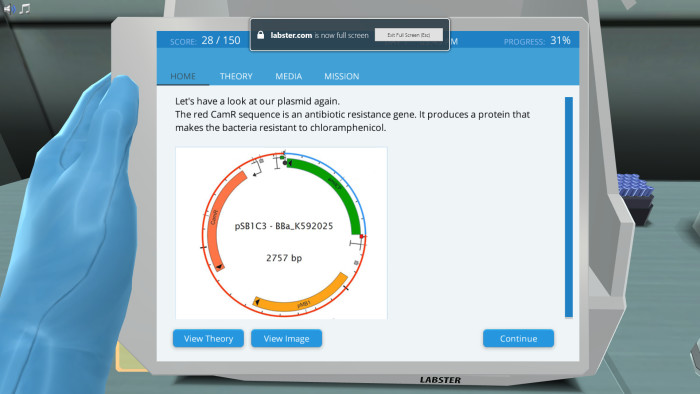
Genetic engineering is an exciting and rapidly advancing field that offers countless possibilities for scientific discovery and innovation. For one, it allows previously incurable diseases to be treated, such as hereditary conditions or birth defects.
A striking example is the miraculous recovery of Emily Whitehead, a six-year-old child with a case of relapsed acute lymphoblastic leukemia (ALL). Emily was subjected to an experimental therapy called CAR T-cell therapy, which uses genetically engineered immune cells to kill the cancer. Emily survived and, to date, has been living more than ten years cancer-free.
Despite these exciting prospects, teaching this topic to students can be challenging. To make the process more engaging, here are five creative ways to teach genetic engineering that will capture your students' imagination and foster their understanding.
One effective way to teach genetic engineering is by incorporating interactive models into your lessons. Models provide a tangible representation of abstract concepts and allow students to visualize the processes involved.
For example, you can use 3D-printed models of DNA molecules to demonstrate gene editing techniques like CRISPR-Cas9. Students can manipulate the models themselves, deepening their understanding of the mechanisms behind genetic engineering.
Online demonstrations can also work wonders. These allow students to witness firsthand how genetic engineering techniques work and how they are done. At the same time, they do not have to worry about sample contamination or breaking any expensive equipment. If they make mistakes, they can just restart the demonstration.
Learning should never be dull, and genetic engineering is no exception. Incorporating games and activities into your lessons can make the topic more enjoyable and memorable.

You can even use lab simulations like Labster’s Genetically Engineered Machine virtual lab. Here, students will design a synthetic biological machine using the techniques of genetic engineering. In this virtual lab, students will learn methods like:
This virtual lab puts them in charge of creating a genetically engineered machine using these techniques. Not only will they learn key concepts, but they will also have fun as they try to assemble a working genetically engineered machine.
Discover Labster's Genetically Engineered Machine virtual lab!
Technology can be a powerful ally when teaching genetic engineering. There are numerous online resources and tools available to enhance your lessons.
For instance, virtual lab simulations, like the ones offered by Labster, allow students to conduct experiments and explore the world of genetic engineering in a virtual environment. Additionally, bioinformatics software, such as Geneious or SnapGene, can be introduced to teach students how to analyze and manipulate DNA sequences.
These tech-enabled teaching tools let students get the hang of crucial concepts first before performing them in an actual laboratory setting. This way, they can gain more confidence with complex topics like this.
Genetic engineering offers a wide range of exciting career opportunities. Introducing students to these potential paths can inspire their interest and motivation.
You may invite guest speakers from various fields, such as biomedical research, agriculture, or pharmaceuticals, to share their experiences and career journeys. Organize field trips to biotechnology companies or research institutes where students can see genetic engineering in action.
By showcasing the real-world applications of genetic engineering, students can envision themselves as future scientists and innovators.
This is a great way to ignite students' curiosity and demonstrate the relevance of genetic engineering. Show how it is used in medicine, agriculture, and environmental conservation. Discuss breakthroughs in gene therapy, genetically modified crops, or the preservation of endangered species.
Highlighting the impact of genetic engineering on our daily lives helps students grasp its importance. Also, this lets students foster a deeper appreciation for the subject.
Teaching genetic engineering requires creativity, engagement, and practicality. By using interactive models, incorporating games and activities, integrating technology, introducing career paths, and connecting the topic to real-world applications, you can make genetic engineering come alive in your classroom.

The key is to create a supportive and encouraging environment where students can explore and discover the wonders of genetic engineering. You can achieve this by using a virtual lab simulation like Labster’s Genetically Engineered Machine. Students will definitely enjoy learning about genetic engineering through this fun activity.
Try our free 30-day All Access Educator's Pass today and teach with Genetic Engineering simulation alongside 300+ other virtual labs!

Labster helps universities and high schools enhance student success in STEM.
Request DemoRequest a demo to discover how Labster helps high schools and universities enhance student success.
Request Demo